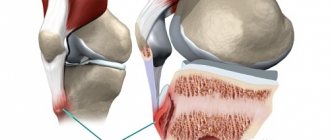When assessing the physical development of children, first of all, attention is paid to the parameters of height and weight. Ten years ago, in 2006, the World Health Organization adopted new standards for height and weight gain in children.
Those tables of the norms of weight and height of children under 10 years of age according to the WHO, which existed earlier, took statistical data on bottle-fed children as their basis. Breastfed children grow and gain weight more slowly than their peers. So it was believed that old nutritional recommendations could lead to increased nutritional requirements by 25%-30%, which in turn led to the development of obesity.
The new adopted parameters show the normal development of children at an early age in optimal conditions, regardless of the type of feeding, habitat and financial situation of the family.
The WHO tables show data on girls and boys separately.
The history of height and weight standards
By the end of the 70s, the issue of controlling height and weight in children arose. The reference data of the MSS (health statistics) centers was taken as a basis.
In 1993, the WHO began to panic that the statistics were not reliable, but were inflated by 20%. Which in turn led to recommendations for parents about supplementary feeding of children. The reason for this was low weight; according to statistics, as a result of such actions, the level of obesity in children increased.
And already a year later in 1994, the WHO recommendation to revise statistical data was approved.
From 1993 to 2007, active research was carried out to develop new curves and construct tables with new, more reliable data on the height and weight of children.
A large number of observations were carried out on children aged from birth to two years (24 months), and examinations of children from 18 to 71 months. The study involved 8,440 children of different ages. Breastfeeding was a prerequisite, and mothers did not smoke. So the development parameters of children who lived in conditions in which it was possible to achieve maximum potential were derived. The children who took part in the research were from different climatic and cultural classes.
The height and weight standards for children under 0 years old, according to WHO, are divided into 8 tables.
- The first two are the norms, weight and height, for girls from birth to one year. Since at this age monthly weight gain indicators are very important, a separate table was displayed.
- The third and fourth tables are the height and weight of boys from birth to one year.
- The fifth and sixth tables are the height and weight of girls from one year to 10 years. At this age, there is no longer a need to monitor increases monthly. However, half a year is counting.
- The seventh and eighth tables are the height and weight of boys from one to 10 years old.
Weight of a girl from 0 to one year
In the girls’ weight table, the indicator from the norm (average level) fluctuates within 0.4 kg, to the side below and above the average, according to WHO, these data should be considered the norm and there is no need to start worrying.
If the indicators are very low (low) or very high (high), you should pay attention and immediately consult a doctor for a timely examination, consultation and, if necessary, treatment.
Girls are born with less weight and during the first year of life they gain 200-300 grams after the 2nd month.
Norms of weight and height for children under 10 years of age according to WHO data in tabular resolution.
Weight and height indicators for children: where did they come from and why are they needed?
As you know, during the first year of life, all infants will have a monthly visit to their local pediatrician. During these visits, doctors examine the little person, check whether there were any reactions to the vaccinations, and measure the baby’s height and weight. Thanks to the results obtained, the doctor can tell how the baby is developing, whether everything is fine, and whether there are any developmental abnormalities.
As you yourself understand, the rate of weight gain indicates whether the baby is eating enough, whether he has any disturbances in the functioning of the gastrointestinal tract or any other systems. Alternatively, if there is a discrepancy with the established standards in this matter, the doctor may recommend putting the baby to the breast more often, introducing supplementary feeding, or, conversely, feeding him less often and in smaller portions. Of course, it’s not very good if your child is constantly hungry, but it’s no better if your baby overeats all the time. Such children are more likely to suffer from colic and abdominal pain, and they may also be prone to obesity in adulthood.
So, let's summarize: weight and height, head and chest circumference are very important in pediatrics. Based on the primary figures that the doctor receives at birth and observing their changes during the first year of life, he can talk about the baby’s health status, its development, the presence of any pathologies, and also give recommendations regarding its diet, regimen, and other appointments.
Weight and height of a child from 0 to 1 year
Immediately after birth, the baby is weighed and height measured. The norm is considered to be a weight of 2500-4000g, a height of 45-55 cm. A child with a weight of 4000g is considered to exceed the standards. This may be due either to the baby’s constitution or to a deviation in the mother’s metabolism. Weight below normal also negatively affects the health of the baby. Low weight is an indicator of a poor pregnancy. The cause may be alcohol, nicotine, poor nutrition of the mother.
In the first days of life, a decrease in the baby's weight is observed. This is due to the removal of fluid from the body. It is recommended to contact your pediatrician every month to examine your child.
The ratio of height and weight parameters in children
Indeed, in medicine there are norms for the weight and height of children under one year old, which increase according to their age. However, we should not forget that each toddler is individual, and has its own individual heredity, quality of life, diet, sleep patterns, etc. Some experts argue that even the emotional background in the family can influence the increase in height and weight in a child.
An important role in assessing the developmental state of the baby is played by the relationship between height and weight, in other words, this index is called body mass index. Many mothers who try to watch their figure know about it first-hand. For a baby, the normal body mass index is equal to 13-21 points. It is he who gives us the opportunity to find out whether the baby is suffering from obesity or malnutrition, which requires medical intervention.
Weight and height of a child from 2 to 7 years old, table
The age of a child from 2 to 7 years is usually called the most interesting period of development. It is during this period that the baby amazes the parents with a sharp leap in the development of intelligence, thinking, and logic. Weight and height also undergo noticeable changes.
From the ages of 2 to 7 years, the main question of every child is “why?” Children absorb information like sponges and explore a new world with great interest. This period of life also plays an important role in the formation of personality and individuality, because The baby goes to kindergarten, school, various clubs. It is during this period that it is necessary to pay great attention to the physical and intellectual development of your child.
The table shows the average height and weight of the child; deviation in one direction or the other by 10-15% is considered normal.
| Age | Boys | Girls | ||
| Height, cm | Weight, kg | Height, cm | Weight, kg | |
| 2 years | 84,5 — 89,0 | 11,7 — 13,5 | 83,3 — 87,5 | 11,3 — 12,8 |
| 3 years | 92,3 — 99,8 | 13,8 — 16,0 | 93,0 — 98,1 | 13,3 — 15,5 |
| 3.5 years | 95,0 — 102,5 | 14,3 — 16,8 | 95,6 — 101,4 | 14,0 — 16,4 |
| 4 years | 98,3 — 105,5 | 15,1 — 17,8 | 98,5 — 104,1 | 14,8 — 17,6 |
| 4.5 years | 101,2 — 108,6 | 15,9 — 18,8 | 101,5 — 107,4 | 15,8 — 18,5 |
| 5 years | 104,4 — 112,0 | 16,8 — 20,0 | 104,7 — 110,7 | 16,6 — 19,7 |
| 5.5 years | 107,8 — 115,1 | 17,7 — 21,3 | 108,0 — 114,3 | 17,7 — 21,1 |
| 6 years | 110,9 — 118,7 | 18,8 — 22,6 | 110,9 — 118,0 | 18,7 — 22,5 |
| 6.5 years | 113,8 — 121,8 | 19,9 — 23,9 | 114,0 — 121,3 | 19,7 — 23,8 |
| 7 years | 116,8 — 125,0 | 21,0 — 25,4 | 116,9 — 124,8 | 20,6 — 25,3 |
Indicators of physical development of girls and boys up to one year
According to standards set by health authorities, girls have lower height and weight. Moreover, it is worth noting that if a child’s indicator reaches the lower mark, then this is a reason to consult a doctor.
Below I suggest that you familiarize yourself with the table, which shows the norms of height and weight for a child by month and until he reaches 1 year. It is worth noting that these data refer to children who were born on time, and no special difficulties or pathologies arose during delivery.
Table of norms for height and weight of children under 1 year
Why may there be minor deviations from the table in weight or height?
If you notice insignificant differences from the table values, do not worry. Minor deviations may occur for the following reasons:
- The WHO tables calculate the so-called reference weight and height of a child, that is, they do not take into account many real life factors, including the parameters of a child born prematurely (there are separate tables for such babies).
- The increase in a child’s weight and height over the years is purely individual. In addition, it is necessary to take into account that in the first 12 months development does not occur evenly, but spasmodically. Also keep in mind that in the first months of life, every new food product that you offer your baby always requires adaptation of the body, so during this period the child’s weight may decrease.
Features of the first year of life
In terms of increasing the main indicators of physical development, the first year of a newborn is considered the most active. According to experts, during the first year of life, the “length” of a baby increases by 20-25 cm, and the weight doubles by 6 months and triples when it reaches one year.
If we analyze this issue in more detail, it is worth noting that in the first months of life, the baby gains the maximum number of kilograms, often this figure easily reaches 1-1.8 kg. In the future, when he becomes more active and mobile, the number of kilograms gained is significantly reduced. So, by 11-12 months the baby can gain 100-500 g, but at the same time, it is not considered a deviation if he does not gain anything.
As for growth, there are no clear trends, and everything depends on the conditions in which the child is located and his nutrition. The absolute norm would be if the baby grows by 5 cm in one month, and only by 1 cm in the next. However, to be sure that the baby is developing well, do not skip monthly visits to the pediatrician.
Table of weight and height indicators for a child (girls and boys) under 10 years of age
| Age, years | Boys | Girls | ||
| Weight, kg | Height, cm | Weight, kg | Height, cm | |
| 1 | 9,6 | 75,7 | 8,9 | 74 |
| 2 | 12,2 | 87,8 | 11,5 | 86,4 |
| 3 | 14,3 | 96,1 | 13,9 | 95,1 |
| 4 | 16,3 | 103,3 | 16,1 | 102,7 |
| 5 | 18,3 | 110 | 18,2 | 109,4 |
| 6 | 20,5 | 116 | 20,2 | 115,1 |
| 7 | 22,9 | 121,7 | 22,4 | 120,8 |
| 8 | 25,4 | 127,3 | 25 | 126,6 |
| 9 | 28,1 | 132,6 | 28,2 | 132,5 |
| 10 | 31,2 | 137,8 | 31,9 | 138,6 |
Height and weight of children from 0 to 1 year, table
| Age, months | Boys | Girls | ||
| Height, cm | Weight, kg | Height, cm | Weight, kg | |
| 0 (newborn) | 42.5 - 57.5 Avg: 50.0 | 2.8 - 3.80 Avg: 3.3 | 41.5 - 56.3 Avg: 49.0 | 2.7 - 3.7 Avg: 3.2 |
| 1 month | 54,7 | 4,5 | 53,7 | 4,2 |
| 2 months | 58,4 | 5,6 | 57,1 | 5,1 |
| 3 months | 61,4 | 6,4 | 59,8 | 5,8 |
| 4 months | 63,9 | 7,0 | 62,1 | 6,4 |
| 5 months | 65,9 | 7,5 | 64,0 | 6,9 |
| 6 months | 67,6 | 7,9 | 65,7 | 7,3 |
| 7 months | 69,2 | 8,3 | 67,3 | 7,6 |
| 8 months | 70,6 | 8,6 | 68,7 | 7,9 |
| 9 months | 72,0 | 8,9 | 70,1 | 8,2 |
| 10 months | 73,3 | 9,2 | 71,5 | 8,5 |
| 11 months | 74,5 | 9,4 | 72,8 | 8,7 |
| 12 months = 1 year | 75,7 | 9,6 | 74,0 | 8,9 |
Indicators for girls and boys from 11 to 17 years old
Below is a table that contains indicators of the normal weight and height of children. However, it is worth noting that the range for this age is quite wide, since this is the period of puberty. It is during this period that certain changes related to hormonal levels may occur in the child’s body.
For girls, extra pounds are especially painful, but following strict diets at this age is not recommended, since a lack of healthy and nutritious vitamins can lead to the development of serious diseases in the future.
| Age, years | Boys | Girls | ||
| Weight, kg | Height, cm | Weight, kg | Height, cm | |
| 11 | 31,0-39,9 | 138,5-148,3 | 30,7-42,5 | 138,2-152,4 |
| 12 | 34,4-45,1 | 143,6-154,5 | 36-45,4 | 146,3-160,1 |
| 13 | 38,0-50,6 | 149,8-160,6 | 43,0-52,5 | 151,8-159,8 |
| 14 | 42,8-56,6 | 156,2-167,7 | 48,2-58,0 | 155,4-163,6 |
| 15 | 48,3-62,8 | 162,5-173,5 | 50,6-60,5 | 157,2-166,0 |
| 16 | 54,0-69,6 | 166,8-177,8 | 51,8-61,3 | 158,0-166,8 |
| 17 | 59,8-74,0 | 171,6-181,6 | 49,2-68 | 158,6-169,2 |
Tables of norms for weight and height of girls from birth to one year according to WHO
Table of weight norms for girls
Age
| Girl's weight (kg) | |||||||
| significantly below normal | short | lower limit of normal | norm | upper limit of normal | high | significantly higher than normal | |
| 0 months | 2,0-2,4 | 2,4-2,8 | 2,8 | 3,2 | 3,7 | 3,7-4,2 | 4,2-4,8 |
| 1 month | 2,7-3,2 | 3,2-3,6 | 3,6 | 4,2 | 4,8 | 4,8-5,5 | 5,5-6,2 |
| 2 months | 3,5-3,9 | 3,9-4,5 | 4,5 | 5,1 | 5,8 | 5,8-6,6 | 6,6-7,5 |
| 3 months | 4,0-4,5 | 4,5-5,2 | 5,2 | 5,9 | 6,6 | 6,6-7,5 | 7,5-8,5 |
| 4 months | 4,4-5,0 | 5,0-5,7 | 5,7 | 6,4 | 7,3 | 7,3-8,2 | 8,2-9,3 |
| 5 months | 4,8-5,4 | 5,4-6,1 | 6,1 | 6,9 | 7,8 | 7,8-8,8 | 8,8-10,0 |
| 6 months | 5,1-5,7 | 5,7-6,5 | 6,5 | 7,3 | 8,3 | 8,3-9,4 | 9,4-10,6 |
| 7 months | 5,3-6,0 | 6,0-6,8 | 6,8 | 7,6 | 8,6 | 8,6-9,8 | 9,8-11,1 |
| 8 months | 5,6-6,2 | 6,2-7,0 | 7,0 | 8,0 | 9,0 | 9,0-10,2 | 10,2-11,6 |
| 9 months | 5,8-6,5 | 6,5-7,3 | 7,3 | 8,2 | 9,3 | 9,3-10,6 | 10,6-12,0 |
| 10 months | 5,9-6,7 | 6,7-7,5 | 7,5 | 8,5 | 9,6 | 9,6-10,9 | 10,9-12,4 |
| 11 months | 6,1-6,9 | 6,9-7,7 | 7,7 | 8,7 | 9,9 | 9,9-11,2 | 11,2-12,8 |
| 1 year | 6,3-7,0 | 7,0-7,9 | 7,9 | 9,0 | 10,1 | 10,1-11,5 | 11,5-13,1 |
There are some changes in growth. Girls, unlike boys, do not stretch out and at 12 months they have a difference of almost 1.5-2 centimeters with boys.
Girls' height chart
| age | Girl's height (cm) | ||||||
| significantly below normal | short | lower limit of normal | norm | upper limit of normal | high | significantly higher than normal | |
| 0 months | 43,6-45,4 | 45,4-47,3 | 47,3 | 49,2 | 51,0 | 51,0-52,9 | 52,9-54,7 |
| 1 month | 47,8-49,8 | 49,8-51,7 | 51,7 | 53,7 | 55,6 | 55,6-57,6 | 57,6-59,6 |
| 2 months | 51,0-53,0 | 53,0-55,0 | 55,0 | 57,1 | 59,1 | 59,1-61,2 | 61,2-63,2 |
| 3 months | 53,5-55,6 | 55,6-57,7 | 57,7 | 59,8 | 61,9 | 61,9-64,0 | 64,0-66,1 |
| 4 months | 55,6-57,8 | 57,8-59,9 | 59,9 | 62,1 | 64,3 | 64,3-66,4 | 66,4-68,6 |
| 5 months | 57,4-59,6 | 59,6-61,8 | 61,8 | 64,0 | 66,3 | 66,3-68,5 | 68,5-70,7 |
| 6 months | 58,9-61,2 | 61,2-63,5 | 63,5 | 65,7 | 68,0 | 68,0-70,3 | 70,3-72,5 |
| 7 months | 60,3-62,7 | 62,7-65,0 | 65,0 | 67,3 | 69,6 | 69,6-71,9 | 71,9-74,2 |
| 8 months | 61,7-64,0 | 64,0-66,4 | 66,4 | 68,8 | 71,1 | 71,1-73,5 | 73,5-75,9 |
| 9 months | 62,9-65,3 | 65,3-67,7 | 67,7 | 70,1 | 72,6 | 72,6-75,0 | 75,0-77,4 |
| 10 months | 64,1-66,5 | 66,5-69,0 | 69,0 | 71,5 | 74,0 | 74,0-76,4 | 76,4-78,9 |
| 11 months | 65,2-67,7 | 67,7-70,3 | 70,3 | 72,8 | 75,3 | 75,3-77,8 | 77,8-80,3 |
| 1 year | 66,3-68,9 | 68,9-71,4 | 71,4 | 74,0 | 76,6 | 76,6-79,2 | 79,2-81,7 |
Tables of weight and height for boys from birth to one year
The boy’s weight is the norm according to WHO
| Age | Boy's weight (kg) | ||||||
| significantly below normal | short | lower limit of normal | norm | upper limit of normal | high | significantly higher than normal | |
| 0 months | 2,0-2,5 | 2,5-2,9 | 2,9 | 3,3 | 3,9 | 3,9-4,4 | 4,4-5,0 |
| 1 month | 2,9-3,4 | 3,4-3,9 | 3,9 | 4,5 | 5,1 | 5,1-5,8 | 5,8-6,6 |
| 2 months | 3,8-4,3 | 4,3-4,9 | 4,9 | 5,6 | 6,3 | 6,3-7,1 | 7,1-8,0 |
| 3 months | 4,4-5,0 | 5,0-5,7 | 5,7 | 6,4 | 7,2 | 7,2-8,0 | 8,0-9,0 |
| 4 months | 4,9-5,6 | 5,6-6,3 | 6,3 | 7,0 | 7,8 | 7,8-8,8 | 8,8-9,8 |
| 5 months | 5,3-6,0 | 6,0-6,7 | 6,7 | 7,5 | 8,4 | 8,4-9,4 | 9,4-10,4 |
| 6 months | 5,7-6,3 | 6,3-7,1 | 7,1 | 7,9 | 8,9 | 8,9-9,9 | 9,9-11,0 |
| 7 months | 6,0-6,6 | 6,6-7,4 | 7,4 | 8,3 | 9,3 | 9,3-10,3 | 10,3-11,4 |
| 8 months | 6,2-6,9 | 6,9-7,7 | 7,7 | 8,6 | 9,6 | 9,6-10,7 | 10,7-11,9 |
| 9 months | 6,4-7,1 | 7,1-8,0 | 8,0 | 8,9 | 9,9 | 9,9-11,1 | 11,1-12,3 |
| 10 months | 6,6-7,4 | 7,4-8,2 | 8,2 | 9,2 | 10,2 | 10,2-11,4 | 11,4-12,7 |
| 11 months | 6,8-7,5 | 7,5-8,4 | 8,4 | 9,4 | 10,5 | 10,5-11,7 | 11,7-13,0 |
| 1 year | 6,9-7,7 | 7,7-8,7 | 8,7 | 9,7 | 10,8 | 10,8-12,0 | 12,0-13,3 |
Growth chart for boys up to one year
| Age | Height (cm) | ||||||
| significantly below normal | short | lower limit of normal | norm | upper limit of normal | high | significantly higher than normal | |
| 0 months | 44,2-46,1 | 46,1-48,0 | 48,0 | 49,9 | 51,8 | 51,8-53,7 | 53,7-55,6 |
| 1 month | 48,9-50,8 | 50,8-52,8 | 52,8 | 54,7 | 56,7 | 56,7-58,6 | 58,6-60,6 |
| 2 months | 52,4-54,4 | 54,4-56,4 | 56,4 | 58,4 | 60,4 | 60,4-62,4 | 62,4-64,4 |
| 3 months | 55,3-57,3 | 57,3-59,4 | 59,4 | 61,4 | 63,5 | 63,5-65,5 | 65,5-67,6 |
| 4 months | 57,6-59,7 | 59,7-61,8 | 61,8 | 63,9 | 66,0 | 66,0-68,1 | 68,1-70,1 |
| 5 months | 59,6-61,7 | 61,7-63,8 | 63,8 | 65,9 | 68,0 | 68,0-70,1 | 70,1-72,2 |
| 6 months | 61,2-63,3 | 63,3-65,5 | 65,5 | 67,6 | 69,8 | 69,8-71,9 | 71,9-74,1 |
| 7 months | 62,7-64,8 | 64,8-67,0 | 67,0 | 69,2 | 71,3 | 71,3-73,5 | 73,5-75,7 |
| 8 months | 64,0-66,2 | 66,2-68,4 | 68,4 | 70,6 | 72,8 | 72,8-75,0 | 75,0-77,2 |
| 9 months | 65,2-67,5 | 67,5-69,7 | 69,7 | 72,0 | 74,2 | 74,2-76,5 | 76,5-78,7 |
| 10 months | 66,4-68,7 | 68,7-71,0 | 71,0 | 73,3 | 75,6 | 75,6-77,9 | 77,9-80,1 |
| 11 months | 67,6-69,9 | 69,9-72,2 | 72,2 | 74,5 | 76,9 | 76,9-79,2 | 79,2-81,5 |
| 1 year | 68,6-71,0 | 71,0-73,4 | 73,4 | 75,8 | 78,1 | 78,1-80,5 | 80,5-82,9 |
Features of physical development during puberty
During this period there is a strong leap in the physical development of children. However, remember that everything basically depends on the individual characteristics of the child.
The figure of most children during puberty takes on a slightly disproportionate, awkward appearance. The fact is that at this age tubular bones begin to grow especially quickly, but the development of muscle mass slows down. Thus, you can see that the increase in height in one year was significant, but this was due to the elongation of the limbs, while the chest and pelvis remained the same size or increased slightly. This is why a teenager’s figure can take on such an awkward appearance.
In addition, such awkwardness leaves its mark on his behavior. So, for example, he becomes more clumsy, it is sometimes difficult for him to coordinate his movements, he can even occasionally walk down the street and wave his arms and not notice that he is disturbing people. This age is also characterized by increased emotionality and, accordingly, increased gesticulation when communicating. In this way, teenagers make up for the lack of expressiveness of speech. Removing this deficiency is quite simple; to do this, you will need to include training and exercises in your life.
As for the norms, on average, the growth rate increases by 4.3-6.7 cm per year, and for girls by 2.9-5.8 cm. The largest jump in this indicator can be noted at 13 years of age in girls and at 15 for boys. It is during this period that the growth rate in children over 2 years can increase by 20 cm.
Of course, as you grow, your weight also increases. This figure can also increase in leaps and bounds. Over the course of a year, it can increase by 2.4-5.3 kg in boys and by 2.5-5.2 in girls. At the age of 12, increased muscle mass begins to gain. It is worth noting that the structure of the muscles changes little, but the width of the fiber itself increases significantly. The muscles of teenagers become much stronger, this trend is especially observed in boys.
At this age, complex movements are easily remembered and learned. Thus, you can easily send your child to a sports or dance section, and rest assured that he will quickly be able to succeed there. Otherwise, a certain clumsiness and angularity of movements, which is inherent in children of this age, may remain for the rest of their lives.
Centile table of weight to height ratio for boys
| Boy's height (cm) | Very low | Short | Below the average | Average | Above average | High | Very tall |
| 50 | 2,7 | 2,9 | 3,1 | 3,4 | 3,7 | 3,9 | 4,1 |
| 53 | 3,2 | 3,4 | 3,6 | 4,0 | 4,3 | 4,5 | 4,8 |
| 56 | 3,6 | 3,9 | 4,2 | 4,6 | 4,9 | 5,3 | 5,6 |
| 59 | 4,3 | 4,6 | 5,0 | 5,4 | 5,8 | 6,2 | 6,6 |
| 62 | 5,1 | 5,5 | 5,9 | 6,3 | 6,8 | 7,3 | 7,7 |
| 65 | 6,0 | 6,4 | 6,8 | 7,2 | 7,7 | 8,3 | 8,8 |
| 68 | 6,7 | 7,1 | 7,6 | 8,0 | 8,6 | 9,2 | 9,7 |
| 71 | 7,4 | 7,8 | 8,3 | 8,8 | 9,3 | 10,0 | 10,5 |
| 74 | 8,1 | 8,5 | 9,0 | 9,5 | 10,1 | 10,7 | 11,3 |
| 77 | 8,8 | 9,2 | 9,6 | 10,2 | 10,8 | 11,4 | 12,0 |
| 80 | 9,4 | 9,8 | 10,3 | 10,9 | 11,5 | 12,2 | 12,7 |
| 83 | 9,9 | 10,3 | 10,9 | 11,5 | 12,2 | 12,8 | 13,4 |
| 86 | 10,4 | 10,9 | 11,5 | 12,1 | 12,8 | 13,5 | 14,2 |
| 89 | 10,9 | 11,5 | 12,1 | 12,8 | 13,5 | 14,2 | 14,9 |
| 92 | 11,5 | 12,2 | 12,7 | 13,4 | 14,2 | 14,8 | 15,5 |
| 95 | 12,2 | 12,8 | 13,4 | 14,2 | 14,9 | 15,5 | 16,2 |
| 98 | 12,9 | 13,5 | 14,2 | 14,9 | 15,7 | 16,3 | 17,0 |
| 101 | 13,6 | 14,3 | 15,0 | 15,8 | 16,6 | 17,2 | 18,2 |
| 104 | 14,3 | 14,9 | 15,8 | 16,6 | 17,5 | 18,4 | 19,3 |
| 107 | 15,0 | 15,7 | 16,6 | 17,6 | 18,6 | 19,5 | 20,6 |
| 110 | 15,8 | 16,6 | 17,5 | 18,5 | 19,6 | 20,7 | 22,0 |
| 113 | 16,6 | 17,6 | 18,7 | 19,8 | 21,1 | 22,3 | 23,7 |
| 116 | 17,6 | 18,5 | 19,5 | 20,6 | 21,9 | 23,2 | 24,7 |
| 119 | 18,7 | 19,6 | 20,6 | 22,0 | 23,3 | 24,5 | 26,1 |
| 122 | 19,7 | 20,6 | 21,7 | 23,1 | 24,7 | 26,0 | 27,7 |
| 125 | 20,8 | 21,7 | 22,9 | 24,4 | 26,2 | 27,7 | 29,5 |
| 128 | 21,9 | 22,9 | 24,2 | 25,9 | 27,8 | 29,6 | 31,5 |
| 131 | 23,2 | 24,2 | 25,5 | 27,5 | 29,7 | 31,7 | 34,0 |
| 134 | 24,3 | 25,5 | 27,0 | 29,3 | 31,8 | 34,0 | 36,4 |
| 137 | 25,7 | 27,0 | 28,5 | 31,1 | 34,3 | 36,5 | 39,2 |
| 140 | 27,2 | 28,6 | 30,3 | 33,2 | 36,5 | 39,2 | 42,2 |
| 143 | 29,0 | 30,4 | 32,3 | 35,2 | 38,9 | 41,9 | 45,5 |
| 146 | 30,8 | 32,4 | 34,4 | 37,4 | 41,3 | 44,6 | 48,3 |
Girls' weights are indicated in kilograms.
Each child is individual. And there is nothing to worry about if the baby does not fit into the norm. In case your
If the child is in the corridors “very low” or “very high”, do not be upset. This is just a reason to pay special attention to your baby’s nutrition. Let's say your child is gaining weight very poorly, most likely the baby just has a poor appetite and the poor mother no longer knows how to feed her child. Try to trust the needs of your baby, and do not try to force-feed him or persuade him, nothing good usually comes of this, the child begins to eat at first, and then it becomes more and more difficult to feed him each time. It is enough to let the baby get really hungry for appetite problems to disappear.
If your baby is overweight, there is nothing wrong with that either. It has long been believed that children who were plump or even fat were considered healthy, such children do not have problems with appetite; mothers of children who are very difficult to feed can envy them. If the baby’s weight is “very high” or even more, you should not worry, but if this interferes with his development, it is difficult for the child to run, or lead an active lifestyle, then you should pay attention to the child’s nutrition. It is necessary to limit sweets and introduce more fruits and vegetables into the diet, which will help in the future to avoid many problems in your child’s life.
Factors that influence growth rate and weight gain in children
In fact, physical development indicators are influenced by a huge number of factors, let’s look at which ones. So:
- Heredity. As you yourself understand, small and thin parents cannot grow up to be 2 meters strong. Of course, there are cases when the genes of grandparents play a role in the development of a little person, but in most cases, this is an exception to the rule than the rule itself.
- Diet. From the moment the first complementary foods are introduced, your baby’s diet should become varied. The daily menu must include dishes from meat and fish, dairy and fermented milk products, fresh vegetables and fruits. A lack of vitamins can lead to the fact that the baby will not gain weight well, and his height will not increase in any way. In addition to these problems, the development of more serious diseases is possible in the future, for example, anemia in a child or vitamin deficiency. All this, as you understand, plays an important role in the formation of immunity, so a lack of vitamins can lead to more frequent colds and viral diseases. If you see that your baby lacks any vitamins, because he is constantly tired, his visual acuity decreases, or his nails and hair are brittle, include vitamin complexes in his daily diet. Surely your local pediatrician will be able to offer several options.
- Frequent walks and sports clubs. Scientists have proven that frequent walks in the fresh air have a positive effect on the physical development of the baby. However, if your baby is hyperactive and you see that he would still run and run, then select a section with him that is interesting for him. Under the age of 5, you can choose anything: wrestling, tennis, basketball, swimming, football, but if you want to correct certain indicators of the baby’s development, then approach this issue more carefully. So, in order for the baby to stretch upward, choose sports such as volleyball, basketball, tennis, badminton.
- Family climate. Scientists have long proven that unloved children grow many times slower. No one talks about gifts and the number of toys; there can be a huge number of them, but the baby will not feel loved.
- Rest or sleep. Previously, our mothers and grandmothers frightened us with all sorts of horror stories, for example: “If you don’t eat porridge and don’t sleep, you’ll never grow up.” Jokes aside, but it's really true. The main hormone that is responsible for growth is produced in greater quantities at night. It is very important that the child has a routine; he knows when it is time for sleep and when it is time for rest. The best time to fall asleep is considered to be from 20:00 to 21:00. In addition, keep an eye on your baby’s daily routine; sleep at night should take about 10-11 hours, and he will sleep the remaining 2-3 hours during the daytime. Otherwise, it will be difficult for you to establish a routine for him.
- Other factors include: the presence of pathologies during pregnancy and delivery, the presence of genetic pathologies, infectious diseases in the child.
Deviations from the norm
All standards established by the Ministry of Health are only average indicators. Accordingly, if you see that your child is cheerful, active, eats well and plays, but is 1.5 kg less than the stated norm, then there is no reason to worry. However, if you notice that the increase in height over the year is less than 4 cm and less than 3 kg in weight, then this is a reason to consult a pediatrician.
The pediatrician will be able to examine the baby and suggest which specialist can help you in resolving this issue: a gastroenterologist, geneticist, neurologist or endocrinologist. Depending on the results of the examination, your baby may be prescribed a course of additional vitamins, changes in diet and lifestyle. In more serious cases, a course of treatment may be prescribed, which includes taking hormonal medications.
Video
I suggest you watch a very interesting short video in which a pediatrician talks about the characteristics of height and weight in children of different age groups.
When a baby is born, every mother faces certain problems. For example, with colic in a newborn, in addition, during the first year of life, the mother at least once faces the problem of a runny nose in the baby, which often becomes a symptom of teething, etc. However, unfortunately, few of us At the first symptoms that worry parents and the baby, seek advice from a pediatrician. For some reason, many of us are accustomed to listening to the opinions of grandmothers and strangers on this issue.
Often on the street you can meet people who express their opinions regarding the development indicators of your baby. However, so that you are in no way confused by the opinion expressed, today we looked at what standards of child development are present in modern medicine, and what to do in case of deviations. Now share with us in the comments on the site what trends in height and weight changes were observed in your baby, have you ever heard that he is too small or too big?
How do children grow?
The most intensive period of growth occurs during the process of puberty. Boys and girls grow differently. It is considered normal if a child grows sharply at age 13 and then stops growing rapidly for a couple of years. As a rule, another growth spurt occurs later.
These changes depend on the health, genetics and lifestyle of the teenager. Some at 12 years old are already taller than all their peers, others only at 15 begin to catch up with the former. There are factors that directly affect the physical health, height and weight of a 14-year-old teenager:
- proper varied diet;
- long healthy sleep without light, at least 8 hours in a row;
- physical exercise.
Sometimes during the period of active growth, bones stretch, and muscle mass does not keep up with them. Or vice versa, weight is added first and only then, after a couple of years, the teenager begins to grow, compensating for his dense physique.
IMPORTANT: Losing weight and starving are strictly prohibited for teenagers. Not only the body needs nutrition, but also, most importantly, the brain. If the diet becomes poor, an underdeveloped brain will cause much more trouble in the future than an overweight body.









